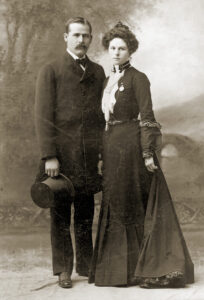Louisa The Extraordinary Life of Mrs. Adams by Louisa Thomas (Penguin Press)
THERE ARE TWO blended pleasures in a new biography of Louisa Catherine Johnson, the English-born woman who married John Quincy Adams, America’s sixth president. The main pleasure is that Louisa Adams consumes us as a demure yet dazzling woman, a somewhat overlooked first lady who is as vulnerable and fragile as she is complex and spirited. One cannot get enough of her.
The other treat in Louisa Thomas’ Louisa: The Extraordinary Life of Mrs. Adams is the extraordinary voice of the author. Thomas’s unusual, enchanting choice of words, together with her subject’s strenuous and glamorous life, make this book an unlikely page turner, in which Louisa, along with her fascinating peers, jumps colorfully to life. “She was surprised by how much surprised her,” writes Thomas about Louisa and John’s bittersweet arrival in Berlin in 1797, the year of their marriage. He was the newly appointed U.S. envoy to Prussia; Louisa was pregnant and deeply anguished by the separation from her family. Still, she rebounded in the foreign city: “There was something fresh about those experiences, something that made her mind reach even as she recoiled. She could not help but be curious.”
From the age of 14, John Quincy Adams, son of the second president, served the United States in various diplomatic posts. And as soon as they were married, Louisa went with him—to Prussia, England, Tsarist Russia and throughout Europe. Few women at the turn of the 18th century traveled the world as she did. She and John met in 1795 at the elegant London home of Louisa’s parents—Joshua Johnson, an American, and his English wife, Catherine. Joshua was a merchant and trader whose brother Thomas would become governor of Maryland and a Supreme Court justice. Louisa, 20, was intelligent and self-assured. John Quincy was 28, an intense and handsome man who was already a high-ranking American foreign official. He would return to the Johnson home, drawn to the family’s warm gatherings, and to Louisa. “He was unusual,” writes Thomas, “but then there were ways in which [the Johnsons] were unusual too—and perhaps Louisa most of all.”
Living abroad as a foreign minister’s wife, Louisa faced formidable royal courts that scrutinized her with a mix of skepticism and curiosity. Louisa, educated, amiable and pretty, not only held her own but found friends—even allies—among the women in Europe’s highest social circles. She could not help but take that experience home, where she found the naive American governing class “grasping for privilege in a society that only pretended to award none.”
Thomas draws heavily on the private diaries, and thus the personal thoughts, of Louisa and John to tell her story. We learn that Louisa suffered gracefully through years of treacherous travel, difficult separations from family, chronic illnesses and, especially, the early deaths of all but one of the couple’s four children. John ’s one-term presidency, starting in 1825, was a “miserable situation” for Louisa. She lived mostly in Boston while her husband was in Washington. But their marriage survived and afterward Louisa “was once again her husband’s greatest champion and advocate.” Indeed, the two were an ideal match—dutiful patriots, best friends and survivors who loved each other. They were married for more than 50 years and died just four years apart—Louisa at 78, in 1852. After John’s death Louisa “continued to claim her own death was imminent,” writes Thomas, “even though she had long since proven herself to be one of those women who looks breakable but endures and endures.”
Daisy Ridgway Khalifa
Originally published in American History magazine. Subscribe here.





